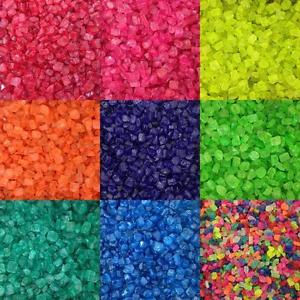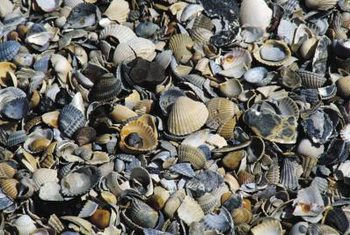CHOOSING SUBSTRATE
- DebTim
- Mar 16, 2018
- 5 min read
Choosing substrate seems to be pretty simple but there are factors you should take into consideration when making your choice. Let's begin with some basics. The material you line the bottom of your aquarium with is called substrate. It's simply a layer of something or surface on which an organism lives, grows and obtains nourishment.

The substrate is the one item in your aquarium that makes the most impact aesthetically. Not only is your choice of substrate going to give your aquarium a certain look, but also it plays a part in the health of your fish and live plants.
There are 4 components that you must consider when choosing the substrate that is right for your aquarium setup. These include the size of the particles that make up the substrate, the colour, if there's a reactivity with water and most important how it will effect your fish.
Let's look at these components closer to understand their importance. Sizes range from large river rock

right down to a fine sand. Larger substrates can allow for bits of uneaten food and fish waste to slip through where it can become toxic if not cleaned up properly. At the other end of the spectrum is fine sand. Waste and food will sit on top and not work it's way through to become trapped being visible and not appealing to look at. The sand itself can become packed down lacking oxygen. Over time the sand can build up with toxic gases eventually releasing hydrogen sulfide into the water, which is highly toxic to your fish. It sounds worse that it is.. To avoid this build up of toxic gases you need to poke through your substrate breaking up any pockets that may be holding these gases. By releasing them before they become a big problem. Your filter will then remove them from the water by using a simple carbon pad.
The particle size can be detrimental to the well being of your fish. If your fish like to dig, stir and move the substrate around you would want to choose a substrate that would be conducive to this desire. However, smaller substrate like sand that would be ideal for sand sifters can also be sucked up while vacuuming the fish waste and uneaten food particles that you want to clean up. This must be done with a little more care. Some fish don't bother with the substrate at all so you are free to choose which ever you prefer. It's highly recommended that you do a little research for the specific type of substrate that would suit the fish you plan on homing.

Choosing the colour of your substrate is a personal preference. You can pretty much find any substrate you like in every colour from neon to natural. What you may want to consider with the colour choices is what will it look like when it's dirty. A more natural colour will hide the fish waste better than a fluorescent colour. Substrate can also give your tank the illusion of being smaller or larger. It's basically the same as when you paint a room. If the substrate is dark or black your tank will look smaller than it will if you use a white colour giving the tank a bright and more open feel thereby giving it the illusion your tank is bigger. Substrate colours can also enhance the colours of your fish. Bright substrate will help to show off your darker fish and darker substrate will make your lighter fish stand out. This is a personal preference and often over time you change your mind and try something new.
Considering many fish require certain water parameters the choice of substrate can have an impact. Some can be used as buffers when preferring a higher PH. This is why often you will see African cichlid tanks with crushed coral as the substrate. Peat moss does the exact opposite lowering your PH level being great for other species such as angelfish.
Substrate you choose can have an impact on your fish as well. Not only can it cause a reaction in the water but it can do the same to your fish. If the substrate is sharp, such as broken shells. This can cause cuts or other injuries to your fish. Very bright substrate can cause your fish stress especially when coupled with bright lighting. This may cause them to lose their colour or even send them into hiding. Looking into this further, choosing something that will be beneficial to your fish yet still pleasing to you can be easily achieved with all the choices out there.

There is always the option of no substrate. It's become quite common in hospital tanks, fry grow out tanks and breeding tanks. There are pros to not having substrate such as they are easier to clean, much easier to tear down, and much easier to catch your fish. Now there are cons to consider as well. There is nothing to hide the waste and food bits, it can be stressful for your fish, especially if they are naturally sand sifters and have that instinct to dig and move the substrate around denied them, It's also been found that some fish are afraid of their reflection suffering unnecessary stress. Although this has become quite common, it is recommended that bare bottom tanks only be used when you have a specific reason for doing so.
Gravel is the most common choice as it comes in so many sizes and colours to choose from. Make sure when choosing the gravel, the pebbles are smooth, not sharp. Many fish dig through the gravel and can hurt themselves. Size of the pebbles isn't as important as the smoothness of it. Bottom feeders like catfish have no scales and an easily sustain cuts if the gravel has sharp edges.
Sand is a beautiful substrate. In fact it's all I use for all of my tanks. I personally use a pool filter sand that is made of crushed quartz. This sand is so stark white I mix and handful of black sand in just to tone the brightness down a little. There are oodles of types of sand to choose from and yes it comes in many colours as well. You can find one that suits you and is inexpensive. I recommend pool filter sand to anyone.

I find sand the easiest to keep clean as the waster and other particles sit on top to be removed easily. You can easily hover your syphon above the sand picking up the bits. It's still important that you run a rake through the sand to avoid any anaerobic pockets from developing, or the sand turning black.
There are different types of sand. Some are heavier with less likely to be sucked up by intake tubes. Very fine or light sands can be pulled into an HOB filter intake ending up causing a nasty grinding noise in your impeller. There is a sand for you. I have been through that and over time I have found many suitable sands that are too heavy to conflict with the workings of an HOB.
Setting up an aquarium has unlimited options and choices. From the size tank to the fish that will be living in there you have so many things to choose. Before embarking on this adventure make sure and do a little research so you know your fish have exactly what they need.












Comments